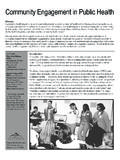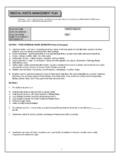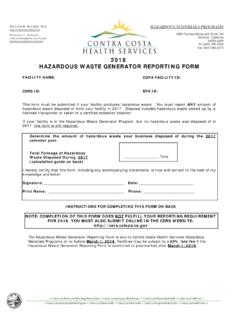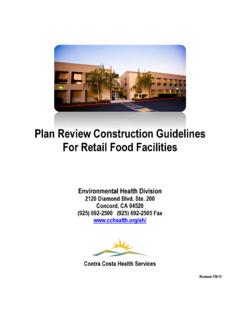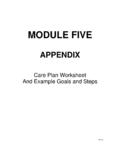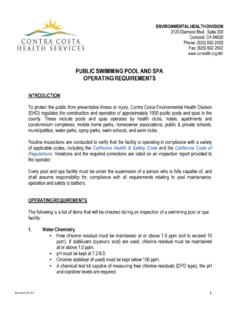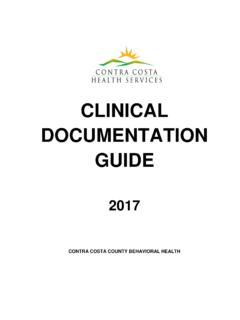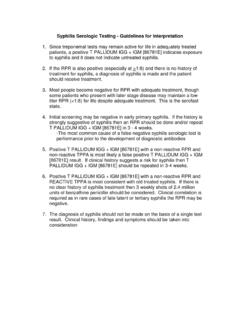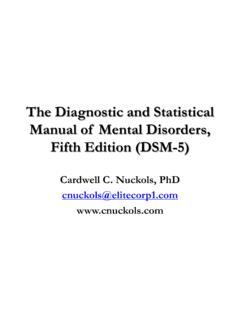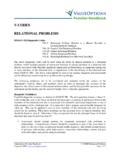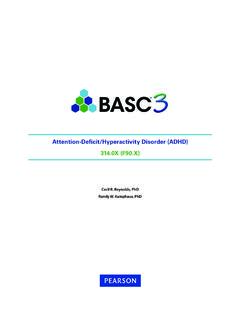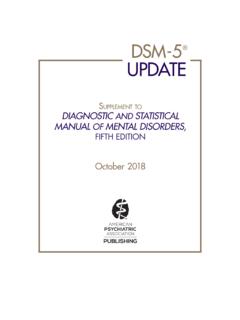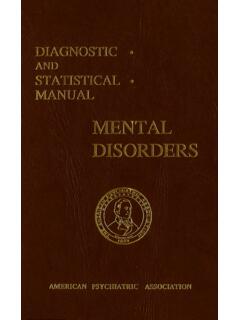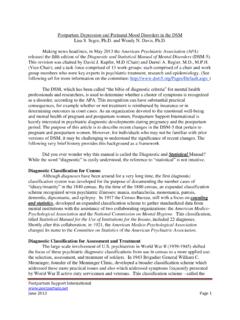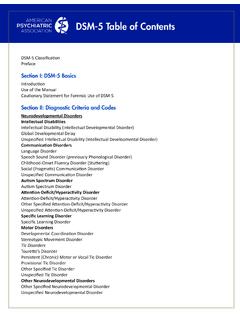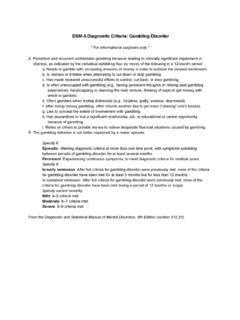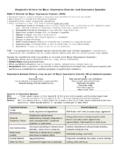Transcription of DIAGNOSIS REFERENCE GUIDE A. Diagnostic Criteria for ...
1 ALCOHOL & OTHER DRUG SERVICES DSM-5 SUD DIAGNOSIS REFERENCE GUIDE CCCAODS pg. 1 DIAGNOSIS REFERENCE GUIDE A. Diagnostic Criteria for Substance Use Disorder See DSM-5 for Criteria specific to the drugs identified as primary, secondary or tertiary. P S T (P=Primary, S=Secondary, T=Tertiary) 1. Substance is often taken in larger amounts and/or over a longer period than the patient intended. 2. Persistent attempts or one or more unsuccessful efforts made to cut down or control substance use. 3. A great deal of time is spent in activities necessary to obtain the substance, use the substance, or recover from effects.
2 4. Craving or strong desire or urge to use the substance 5. Recurrent substance use resulting in a failure to fulfill major role obligations at work, school, or home. 6. Continued substance use despite having persistent or recurrent social or interpersonal problem caused or exacerbated by the effects of the substance. 7. Important social, occupational or recreational activities given up or reduced because of substance use. 8. Recurrent substance use in situations in which it is physically hazardous. 9. Substance use is continued despite knowledge of having a persistent or recurrent physical or psychological problem that is likely to have been caused or exacerbated by the substance.
3 10. Tolerance, as defined by either of the following: a. Markedly increased amounts of the substance in order to achieve intoxication or desired effect; Which:_____ b. Markedly diminished effect with continued use of the same amount; Which:_____ 11. Withdrawal, as manifested by either of the following: a. The characteristic withdrawal syndrome for the substance; Which:_____ b. The same (or a closely related) substance is taken to relieve or avoid withdrawal symptoms; Which: _____ Diagnostic and statistical manual of Mental Disorders, Fifth Edition Diagnostic Codes Alcohol Use Disorder (ICD 10) ( ) Mild 2-3 symptoms present ( ) Moderate 4-5 symptoms present ( ) Severe 6+ symptoms present Phencyclidine Use Disorder ( ) Mild 2-3 symptoms present ( ) Moderate 4-5 symptoms present ( ) Severe 6+ symptoms present Inhalant Use Disorder.
4 ( ) Mild 2-3 symptoms present ( ) Moderate 4-5 symptoms present ( ) Severe 6+ symptoms present ALCOHOL & OTHER DRUG SERVICES DSM-5 SUD DIAGNOSIS REFERENCE GUIDE CCCAODS pg. 2 Stimulant Use Disorder Mild: Presence of 2-3 symptoms ( ) Amphetamine-type substance ( ) Cocaine ( ) Other or unspecified stimulant Moderate: Presence of 4-5 symptoms ( ) Amphetamine-type substance ( ) Cocaine ( ) Other or unspecified stimulant Severe: Presence of 6 or more symptoms ( ) Amphetamine-type substance ( ) Cocaine ( ) Other or unspecified stimulant Cannabis Use Disorder ( ) Mild 2-3 symptoms present ( ) Moderate 4-5 symptoms present ( ) Severe 6+ symptoms present Other Hallucinogen Use Disorder Mild Presence of 2-3 symptoms Moderate Presence of 4-5 symptoms Severe Presence of 6 or more Opioid Use Disorder ( ) Mild 2-3 symptoms present ( )
5 Moderate 4-5 symptoms present ( ) Severe 6+ symptoms present Sedative, Hypnotic, or Anxiolytic Use Disorder ( ) Mild 2-3 symptoms present ( ) Moderate 4-5 symptoms present ( ) Severe 6+ symptoms present Tobacco Use Disorder ( ) Mild 2-3 symptoms present ( ) Moderate 4-5 symptoms present ( ) Severe 6+ symptoms present Additional Specifiers _____ Screening of substance use revealed insufficient symptoms to indicate abuse or addiction. Name_____ Date_____ DIAGNOSIS by _____ Credential_____
